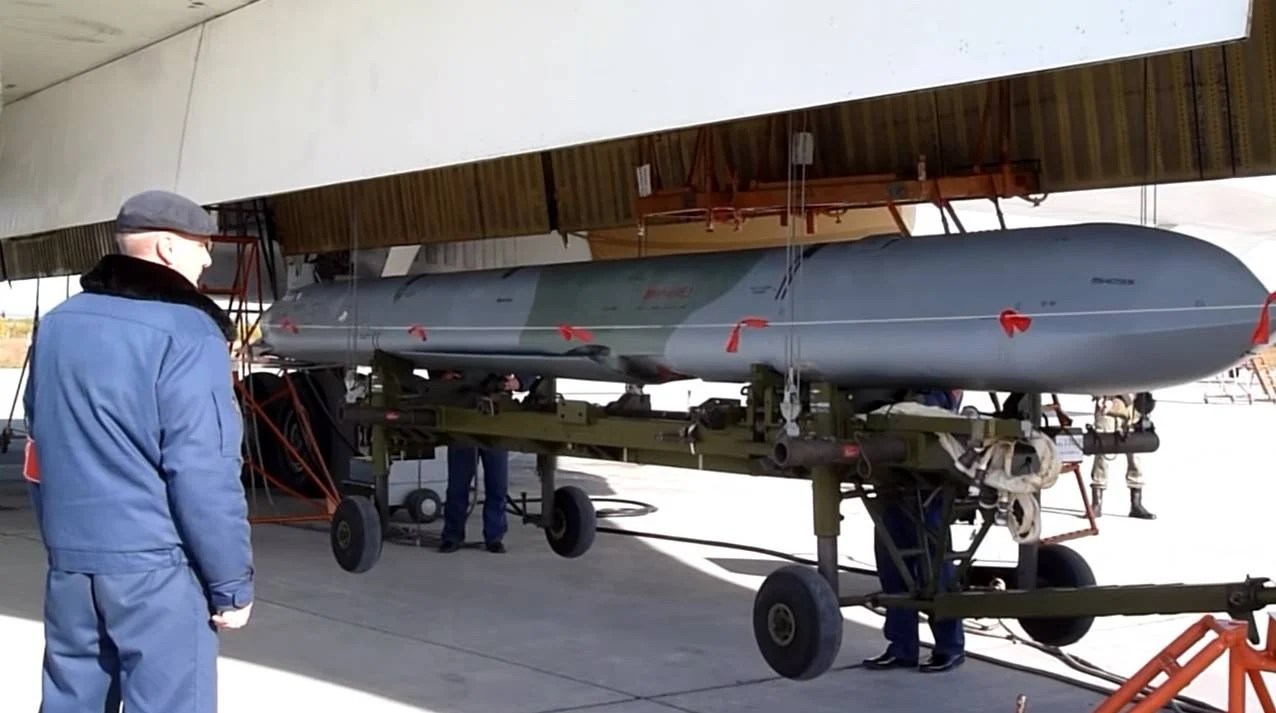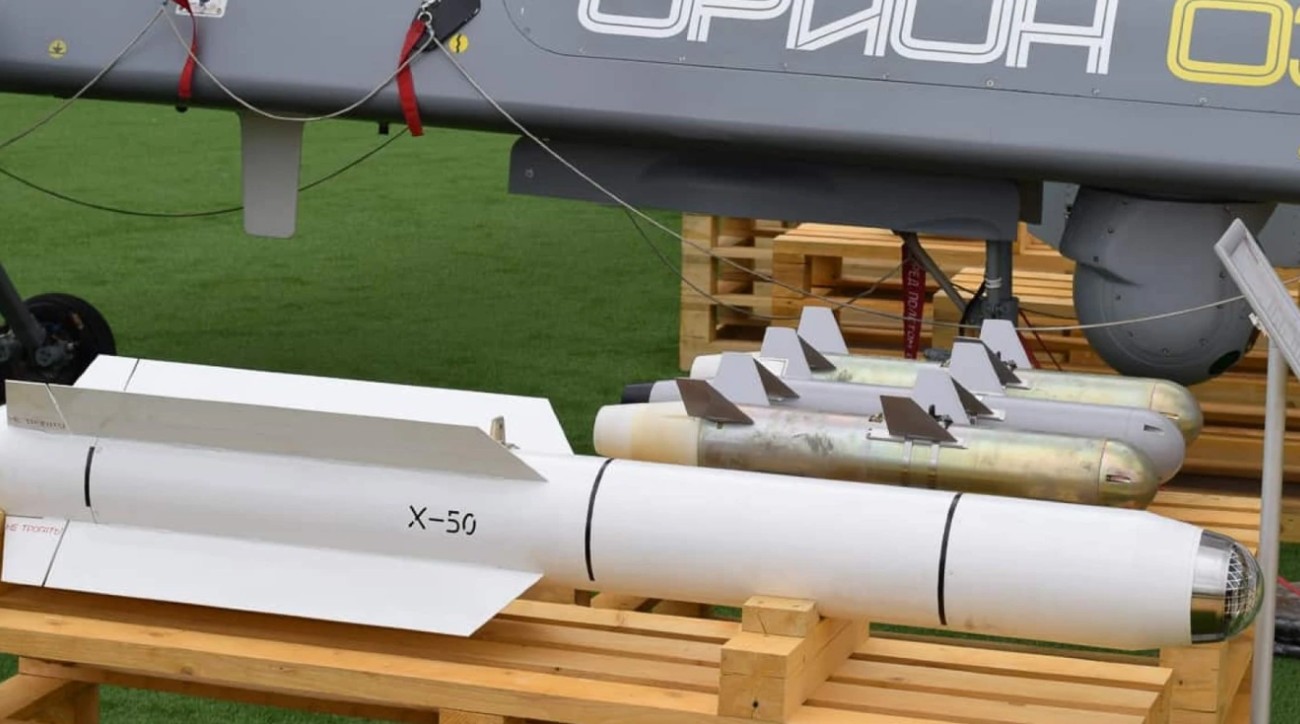The Ukrainian Air Force spokesperson Yuriy Ihnat said on national television earlier this week that Russia wants to produce “long-range cruise missiles” and will use “anything at their disposal” to attack Ukraine. This has essentially brought back into focus Russia’s long-standing Kh-50 missile project.
Ihnat informed the media that Russia was looking to revive old projects, like plans to produce X-50 (Kh-50) missiles, besides increasing the production of UAVs for surveillance missions and conducting attacks.
“Previously, the X-50 project was impractical for Russia because they had a better missile – the X-101,” Ihnat said.
“They urgently need to replenish the supply of long-range high-precision weapons, and the X-50 is a missile like the X-101 or the Kalibr that can fly far and reach any point in Ukraine,” he said. Russia has extensively used the Kh-55 and the Kh-101 air-launched cruise missiles (ALCM) to strike Ukrainian targets.
However, the reports about the revival of the Kh-50 have caused widespread ripples in Ukraine, which is still lobbying for more air defense systems to cope with Russia’s regular missile strikes.
Deputy Chief of the Main Operational Directorate of the General Staff of the Armed Forces of Ukraine, Oleksii Hromov, said Russia intends to mass-produce Kh-50 cruise missiles by fall this year.
During a briefing, Hromov said: “It should be noted that, according to available data, in June this year, the Russian Federation plans to start mass production of strategic air-launched cruise missiles of the Kh-50 type, which will allow the Kremlin to intensify missile strikes on the territory of our country in the fall.”
In June, Russia plans to start mass production of Kh-50 cruise missiles, – Deputy Chief of the General Staff of the Armed Forces of Ukraine.
This may indicate the possibility of increased missile strikes against Ukraine this fall. pic.twitter.com/x3avJkRiSG
— Oriannalyla ?? (@Lyla_lilas) April 13, 2023
Russian media outlets quickly picked up on the reports by Ukraine’s officials. Recently, a Russian news outlet that extensively reports on the war stated that it is understood that the new high-performance ALCM will complement other strike assets and become an additional threat to the Kyiv regime.
Although Kyiv has finally secured the delivery of cutting-edge Patriot missile defense systems, a massive Russian missile attack remains a potent threat as many missiles fired at Ukraine often overwhelm its air defense systems.
What Do We Know About The Kh-50 ALCM?
Information on this cruise missile is scarce. However, it is interesting to note that the Russians refer to the Kh-50 as a “simplified version” of the Kh-101. Additionally, the development of the Kh-50 reportedly began in the 1990s as part of Russia’s Kh-SD project, although this missile was made public only a few years ago, in 2017.
The Kh-50 is believed to be a low-profile, medium-range subsonic cruise missile designed for long-range bombers. When it was first conceived, ready-made components from previous projects were used, which led to similarities with some existing missiles, such as the X-101/102.
On its part, the X-101 or the Kh-101 is one of Russia’s most capable air-launched cruise missiles. The Kh-101 is a Russian ALCM designed for strategic bombers, with a 400 kilograms warhead and a range of 2,000-5,500 kilometers.
The upgraded Tu-160M and Tu-95MSM strategic bombers carry the Kh-101. It is equipped with a conventional warhead that weighs between 400 and 450 kilograms. The missile uses an array of warheads, including high explosive, penetrating, or cluster/submunition warheads.
In February this year, EurAsian Times reported that Russia has allegedly employed the improvised versions of their Kh-101 ALCM in Ukraine for precisions-strikes against critical ground targets inside the embattled country.

Although the specific information about the Kh-50, which has similarities with the Kh-101, is scarce, military experts have their own predictions.
According to experts, this new missile could be built based on a glider with characteristic contours that reduce radar visibility. With a smaller size and weight, the Kh-50 might not need ample fuel supply. It might also be smaller and lighter than the serial Kh-101 ALCM.
Some quarters believe the Kh-50 would be fitted with a turbojet engine, like other ALCMs. Russian media speculates that it would need a thrust-limited, short-life engine that could help the missile fly at extreme subsonic speeds.
The predicted flight range is between 1,500 and 1,600 kilometers. Unlike the Kh-101, launched by Russian strategic bombers, experts predict that the missile will be integrated into the Tu-22M3.
Indian Air Force veteran and military expert Vijainder K Thakur told EurAsian Times, “The X-50 reportedly uses a combination of SATNAV (GLONASS) and an electro-optical digital correlating system called “Otblesk,” which is roughly analogous to US DSMAC, for navigating to the target. In other words, an adversary could not put the missile off track through SATNAV signal jamming!

“Also, the missile features a defensive suite, comprising EW and flare heat traps, to protect itself from air defense and air-to-air missiles equipped with RF and IIR seekers. A built-in defensive suit would give the missile a better chance of penetrating heavily contested airspace.
“The West is focused on building Ukrainian AD capability, so you would expect Russia to focus on improving its capability to penetrate contested airspace. The X-50 appears to be Russia’s best bet for the days ahead.”
However, Ukrainian officials have suggested that Russia currently cannot produce weapons and equipment because it is dependent on imports of equipment essential for producing sophisticated, precision-guided missiles.
Russia, on its part, continues to deny these claims. Russian defense officials have iterated on multiple occasions that the production of weapon systems, including missiles of various types, is in full swing.
Russian Defense Minister Sergei Shoigu instructed Russia’s largest holding company producing various kinds of missiles, JSC Tactical Missiles Corporation (KTRV), to double its precision-guided munitions.
Russian officials have yet to announce the mass production of the Kh-50 missile publicly. If the reports in the media are authentic, the Russian missile inventory will see significant expansion this year.
- Contact the author at sakshi.tiwari9555(at)gmail.com
- Follow EurAsian Times on Google News




